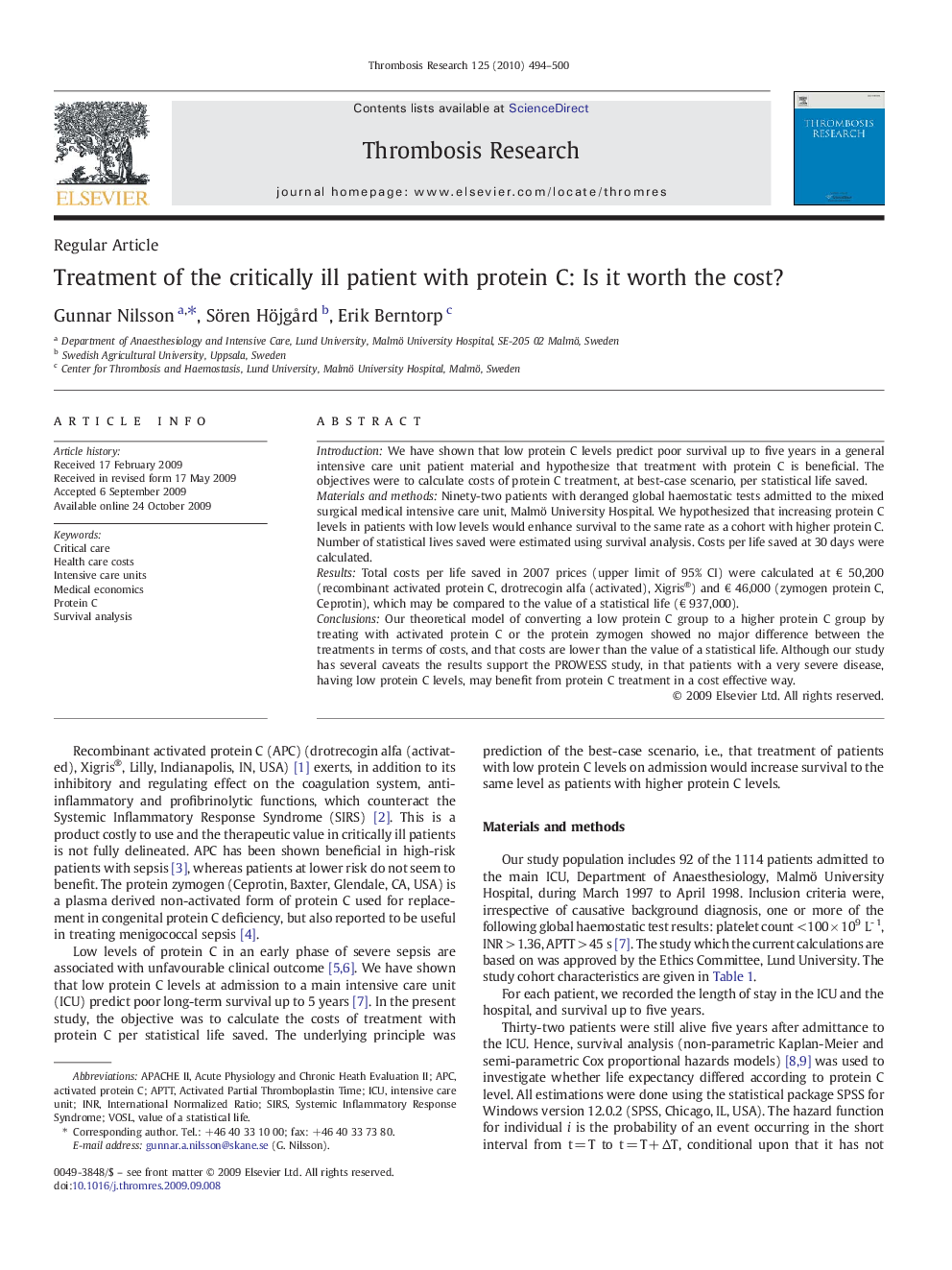| Article ID | Journal | Published Year | Pages | File Type |
|---|---|---|---|---|
| 3027671 | Thrombosis Research | 2010 | 7 Pages |
IntroductionWe have shown that low protein C levels predict poor survival up to five years in a general intensive care unit patient material and hypothesize that treatment with protein C is beneficial. The objectives were to calculate costs of protein C treatment, at best-case scenario, per statistical life saved.Materials and methodsNinety-two patients with deranged global haemostatic tests admitted to the mixed surgical medical intensive care unit, Malmö University Hospital. We hypothesized that increasing protein C levels in patients with low levels would enhance survival to the same rate as a cohort with higher protein C. Number of statistical lives saved were estimated using survival analysis. Costs per life saved at 30 days were calculated.ResultsTotal costs per life saved in 2007 prices (upper limit of 95% CI) were calculated at € 50,200 (recombinant activated protein C, drotrecogin alfa (activated), Xigris®) and € 46,000 (zymogen protein C, Ceprotin), which may be compared to the value of a statistical life (€ 937,000).ConclusionsOur theoretical model of converting a low protein C group to a higher protein C group by treating with activated protein C or the protein zymogen showed no major difference between the treatments in terms of costs, and that costs are lower than the value of a statistical life. Although our study has several caveats the results support the PROWESS study, in that patients with a very severe disease, having low protein C levels, may benefit from protein C treatment in a cost effective way.
